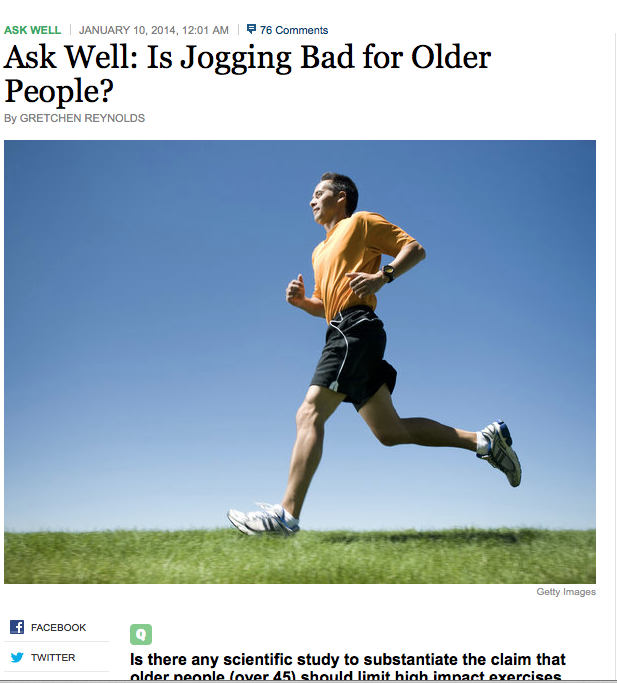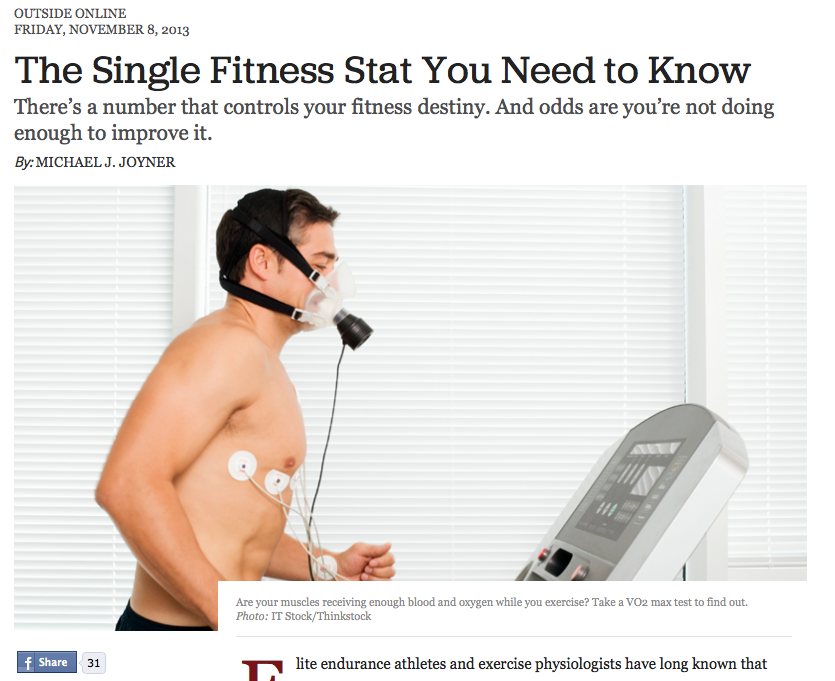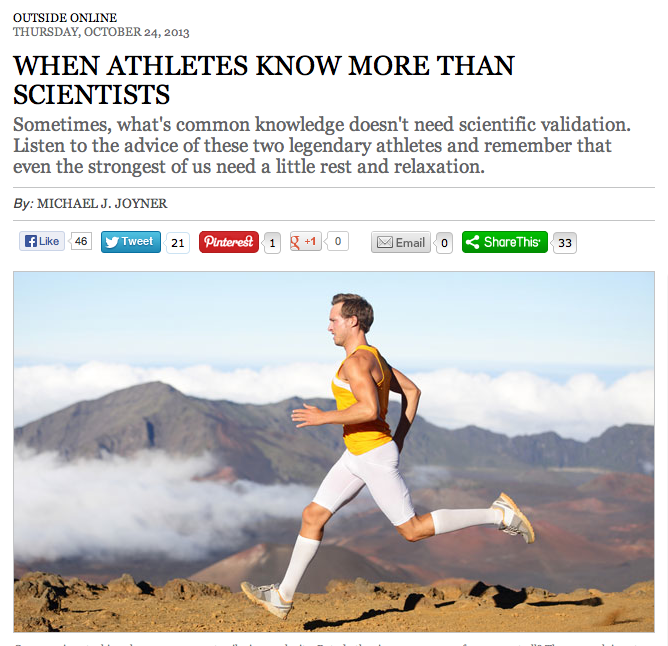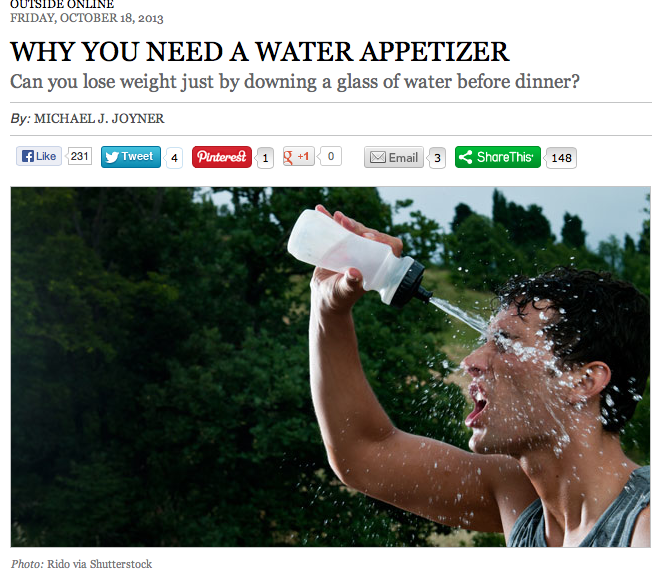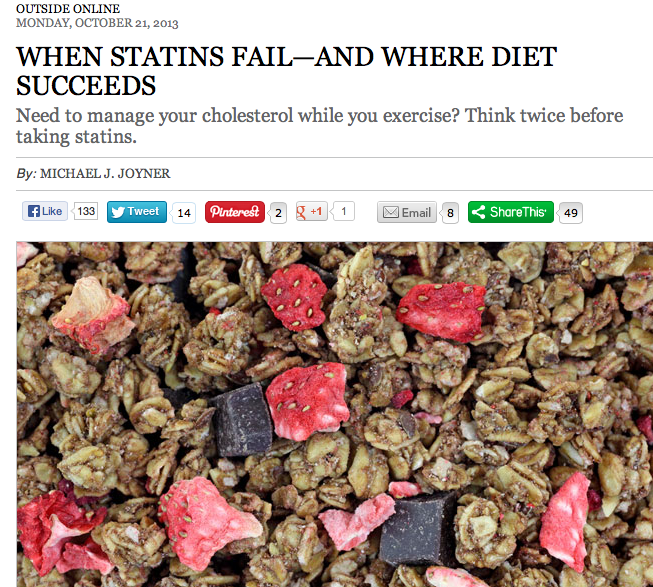Archive for the ‘Research and Health’ Category
Statins, 23andMe, and Personalized Medicine
What opinion leaders in biomedical research were thinking 20 or 30 years ago seems pretty remote from the news last month that the American College of Cardiology and American Heart Association released new guidelines on statin therapy to reduce the risk of cardiovascular disease. It also seems pretty remote from the more recent news that the FDA told the genetic screening company 23andME to suspend their direct to consumer health related genetics testing and advice. At first glance these two stories are unrelated, but bear with me while I make the case that both stories are fundamentally about the limitations of something called personalized medicine and the routine use of genetic testing to customize therapy for individual patients.
Statin Guidelines
The net effect of the guidelines is to recommend that far more apparently healthy people be treated with statins to prevent cardiovascular disease. The new guidelines have been controversial from the start and criticized for reasons including: 1) what data and studies were used to develop the guidelines, 2) the accuracy of the calculator used to estimate who is at what risk and in need of treatment, and 3) the deemphasizing of cholesterol monitoring to adjust therapy. There was also yapping about links between some of the guideline writers with the pharmaceutical industry and just the confusion associated with changing recommendations on how commonly used drugs should be used. What most people fail to realize when they read about the next best medical thing is that medical evidence and recommendations shift and change over time. In a recent review of how medical evidence changes more than a third of what is considered state of the art underwent significant challenge or revision over 10 years. So the fact that the new statin guidelines are controversial and why they are controversial is not surprising.
Direct to Consumer Genetics Testing
23andMe was essentially banned from offering to direct consumer information about disease risk based on genetic testing. The main concerns outlined by the FDA relate to the basic validity and reliability of the testing, how assessments of risk were being communicated to the consumer, and the unpredictable nature of how a consumer might respond to a “positive” test. For common non-communicable diseases (the stuff the kills most of us like diabetes, cardiovascular disease, obesity, and many forms of cancer) there are hundreds of gene variants that put people at increased risk. However the increased risk for each variant is typically tiny and pales in comparison to behavioral risks much of the population engages in. In reality no one really has a good handle on the real risk associated with most gene variants and there is much less insight into how they should influence medical decision making. The other dirty little secret here is that it has been difficult to replicate risk variants across studies, and for a number of diseases the gene variant profiles are the same in people with and without the clinical disease. There are also the predictable issues of what findings in one ethnic group might mean in a different group.
Not so Fast: The Statin 23andME Link
Sometime in the 1980s or early 90s the idea took hold that if we simply knew enough about the individual genetic profile of each person that we would be able to customize drug therapy in specific and medical therapy in general to better treat, predict, and prevent a wide variety of disease. Most prominent academic medical centers now have huge programs based on this basic proposition. The FDA’s message to 23andME can be viewed as a “not so fast” message. Whoever is doing the testing, there is a lot left to learn before personalized medicine might really make a difference for most people seeking advice from most Drs. for most of what ails us.
In this context, the statin guidelines say the same thing the FDA did by what they don’t recommend. Instead of recommending that statin therapy be tailored based on each patients genetic profile and cholesterol level, they advocate use of a generic risk calculator derived from decades old epidemiology studies and then largely abandon the idea that it is important to follow how the drugs affect cholesterol levels. Maybe the next step is simply putting statins in the water.
As far as personalized medicine in general goes, research might ultimately get us to a genetically based diagnostic and therapeutic promised land. However, don’t be surprised if personalized medicine based on your individual genetic profiles ends up becoming the biomedical version of atomic fusion, an attractive idea that just can’t quite get there for most diseases.
Sleep & Health
The usual article on sleep and health focuses on how we are all sleep deprived and the bad things this does to us. The story is pretty simple: chronic low grade sleep deprivation leads to systemic inflammation, weight gain, excessive eating, and hormonal changes that are associated with all sorts of long term health issues. The drowsiness also leads to poor judgment, more accidents, more eating and other shorter term issues. This is all being made worse as technology ranging from artificial lighting to smartphones that make our days longer and longer. Many of us then get up earlier and jump start the day with a mega dose of caffeine.
The epidemiologists tell us that 7-8 hours per day of sleep is the optimal health sweet spot for most of us. People who routinely get by on 5-6 hours of sleep have about 1.5 times the relative risk of death from coronary heart disease. Interestingly, the risk is about 1.4 times for those who sleep a lot:
“Too little or too much sleep are associated with adverse health outcomes, including total mortality, type 2 diabetes, hypertension, respiratory disorders, obesity in both children and adults, and poor self-rated health. The relationship between duration of sleep and vascular events is U-shaped, suggesting that different mechanisms may operate at either end of the distribution of sleep duration.”
If you are worried that you are getting either too little or too much sleep there are some simple steps you can take that work for most people to promote better quality sleep. Highlights include:
- Avoid napping
- Limit the use of (caffeine) to earlier in the day
- Morning exercise
- Avoid large meals before bedtime
- Get adequate exposure to natural light
- Establish a bedtime routine
- Use your bed for sleeping as opposed to reading and watching TV
- Make where you sleep a comfortable place
As a result primarily of the obesity epidemic there is also an epidemic of sleep disturbed breathing. There is a simple questionnaire that can help determine if you have the problem and need medical follow-up.
Sleep & Exercise Performance
What about short term sleep deprivation and exercise performance? What happens when you have a competition and only get four hours of sleep the night before? What if you are in a multi-day event with little time for sleep? Many of the studies on this topic are from the 1980s and 90s and they tend to show that even 30 hours of total sleep deprivation does not do much to VO2max. Studies on longer term submaximal exercise are limited but they tend to show exercise time to exhaustion is reduced but with some subjects effected far more than others. One general finding appears to be that people rate whatever they are doing as harder to do when sleep deprived.
Countermeasures
An interesting source of data on exercise performance and sleep deprivation comes for the literature on physical conditioning and military Special Forces. These individuals frequently do very demanding night operations for several nights in a row with limited opportunities for daytime sleep. In a series of Canadian studies that simulated several days of night operations, caffeine (1-200 mg) improved run time, cognitive performance, and marksmanship.
Another interesting idea is that recovery from days in a row of vigorous activity with short sleep can be enhanced by protein supplementation. There is a lot of discussion in military nutrition circles about 20-25 gms of protein before sleep during periods of high stress physical activity. The idea is that muscle mass will be better preserved during periods of physical stress, sleep deprivation, and limited calorie intake. It would be interesting to know if professional cyclists are adopting similar strategies during the big stage races.
Closing Thought
As part of my medical training I have probably spent more time than most people both working and working out while sleep deprived. There are short term strategies to deal with it, but sleep deprivation is no fun and my goal in middle age is to avoid it as much as possible. Advice that is easier to give but harder to act on in our high strung world.
Who’s Doping Now?
For most of us when I say doping you say Lance Armstrong, or Barry Bonds, or Roger Clemmons or Marion Jones. However, what about the rest of the world and our individual and collective drive for improved performance? Here are a few thoughts on the topic and questions for all of us.
Doping With Tylenol?
A number of recent studies show that acetaminophen (Tylenol) can improve cycling performance. This includes repeated sprints, exercise in the heat, and a self-paced time trial:
“Using acetaminophen, participants cycled at a higher mean power output, with an increased heart rate and blood lactate, but without changes in perceived pain or exertion. Consequently, completion time was significantly faster. These findings support the notion that exercise is regulated by pain perception, and increased pain tolerance can improve exercise capacity.”
Is this doping? Should Tylenol be banned? You can tell a similar story and ask the same questions about caffeine.
What About Middle Age?
A recent piece in the Velo News tells the story of a late 50s recreational cyclist with clinical testosterone deficiency who went on testosterone replacement therapy for a number of issues including osteoporosis. The athlete in question self-reported and asked for a therapeutic exemption so he could keep competing in local races. The exemption denied because he did not have a clearly defined endocrine problem. You can also make the case that Viagra like drugs might improve performance in some people especially at altitude. What does this mean for master athletes who take these compounds for other reasons?
For women there is at least some evidence that hormone replacement therapy (HRT) improves exercise capacity but the data are far from clear cut. What about the aging news anchor who uses botox to keep her job?
Is any of this doping when the drugs in question are used for legitimate medical purposes? Search the internet for anti-aging clinics and you will find all sorts of outfits offering unproven (usually hormonal) therapies purported to slow the aging process. Recently, some elite younger athletes have been tweaking their thyroids levels. Where does the “legitimate medical purposes” justification end and doping or snake oil sales begin?
Academic Doping?
For the twenty somethings reading this article the idea of academic doping – using ADHD drugs obtained on the black market to do better on a test is old news. This practice appears to be pervasive on college and even high school campuses. It also appears to be drifting into the rest of the world where decision making and concentration are critical.
There are all sorts of drugs that enhance or might enhance cognition and more are in the pipeline. Who gets them and when is it fair to use them? Is this just another potential edge for the children of the well-off? In a world of high stakes testing for admission to an elite school or academic program should these substances be banned and test takers subject to doping control? The discussion in the cognitive enhancement world mirrors in many ways the sports doping discussion:
“Drugs developed to treat cognitive impairments are proving popular with healthy college students seeking to boost their focus and productivity. Concerned observers have called these practices a form of cheating akin to athletes’ use of steroids, with some proposing testing students’ urine to deter “academic doping.” The ease with which critics analogize the academic enterprise to competitive sport, and the impulse to crack down on students using study drugs, reflect the same social influences and trends that spur demand for these interventions-our hyper-competitive culture, the commodification of education, and our attraction to technological quick-fixes. Rather than focusing on the technologies that are being put to troubling uses, we would be better served reforming the culture that makes these practices attractive.”
Are We All Dopers?
All of us are surrounded by performance enhancing choices beyond the things like the drugs or nutraceuticals we can inject or put in our mouths. The pervasive invasion of technology into almost every aspect of life offers even more opportunities for performance enhancement. In the end, what does it mean to be human in the 21st century:
- What happens when things like Tommy John surgery are used to pre-emptively improve pitching performance before an injury?
- Who draws what lines about what is ethical and fair?
- Should we even strive for a level playing field?
- What does it mean to be a human in a world where almost every imaginable activity might be subject to high tech performance enhancing strategies?
In the end is there any value left in the lone individual struggling against his or her own limits, or is all about return on investment thinking where the individual is just part of a supply chain leading to a more desirable outcome?
You are currently browsing the archives for the Research and Health category.

